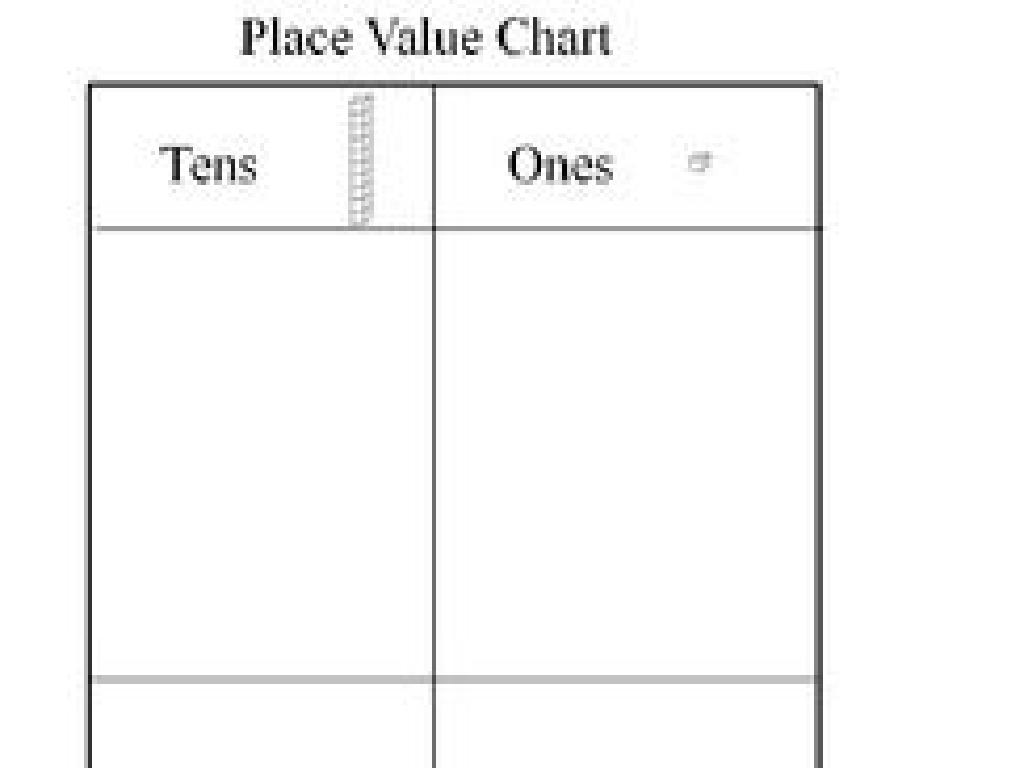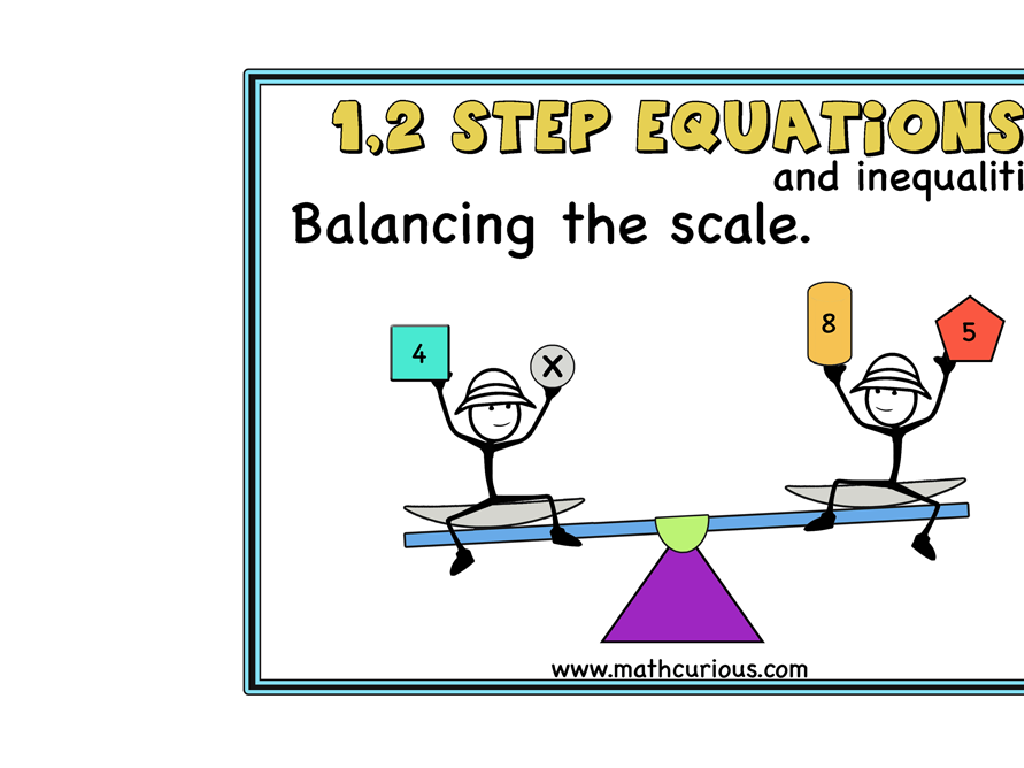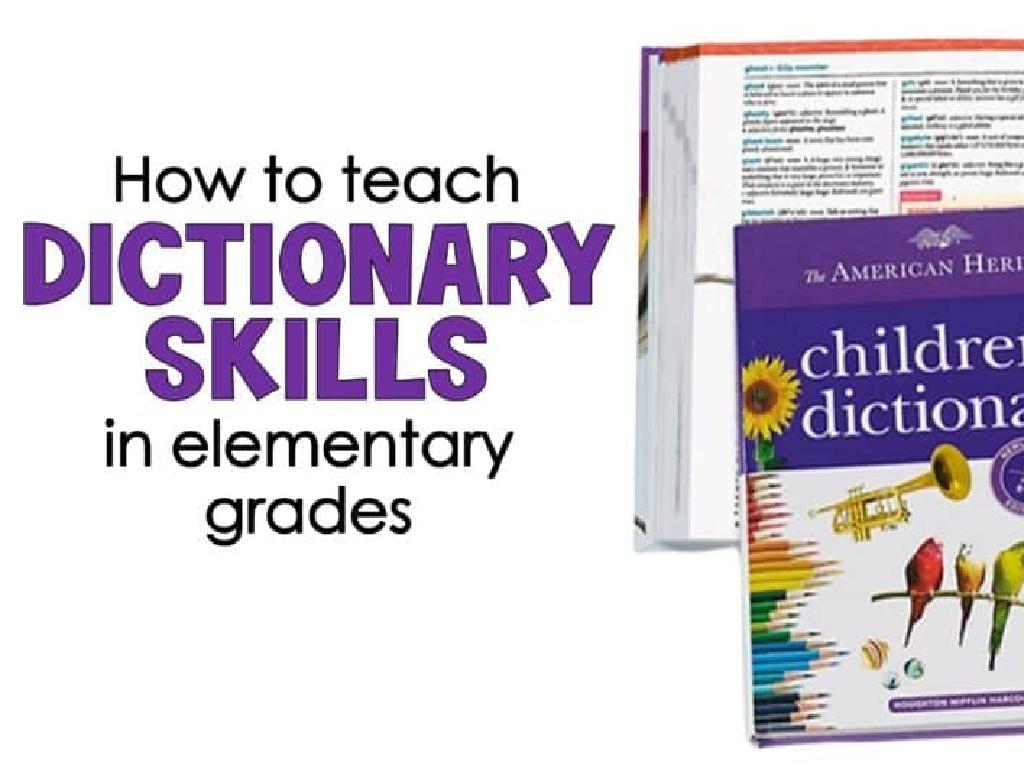Capitalization: Review
Subject: Language arts
Grade: Third grade
Topic: Capitalization
Please LOG IN to download the presentation. Access is available to registered users only.
View More Content
Welcome to Capitalization!
– Reviewing capital letter use
– When to capitalize: rules
– Start sentences, names, and places with capitals
– Capitalization’s role in reading
– Capitals help us spot names, places, and start of sentences
– Why proper capitals matter
– It makes our writing clear and shows respect
|
This slide is aimed at refreshing the students’ knowledge of capitalization. Begin by explaining the basic rules of capitalization, such as using capital letters at the beginning of sentences, for proper nouns, and for important words in titles. Emphasize how capitalization helps readers understand texts better by highlighting specific parts of the writing, such as names and places. Discuss why using capital letters correctly is a sign of good writing skills and shows respect for the subjects we are writing about. Engage the students with examples on the board and ask them to identify where capital letters should be used.
Capitalization: Starting Sentences Right!
– What is capitalization?
– It means using a big letter, like ‘A’, at the start of a word.
– Capital letters signal new sentences
– It’s like a signal that something new is starting.
– Proper nouns get capitalized
– Names of people, places, and things are special and need a capital.
– Begin every sentence with a capital
– This is a rule we always follow to show a new idea is coming up.
|
This slide introduces the concept of capitalization to third-grade students. Capitalization is the practice of using uppercase letters at the beginning of sentences and for proper nouns, which helps in reading and writing. Emphasize the importance of recognizing when to use capital letters, such as at the start of sentences and for names of specific people, places, or important words. Provide examples of proper nouns like ‘George Washington’ or ‘Mount Everest’ and contrast them with common nouns. Encourage students to practice by writing sentences and identifying where capitals should be used. This foundational skill in language arts is crucial for their writing development.
Capitalization: Proper Nouns
– Capitalize people’s names
– Like ‘Tom’, ‘Sally’, or ‘Mr. Smith’
– Capitalize places names
– Such as ‘New York City’, ‘Mount Everest’
– Capitalize holidays
– For instance, ‘Thanksgiving’, ‘Christmas’
– Practice with examples
|
This slide is focused on teaching students the importance of capitalizing proper nouns, which include names of people, places, and holidays. Start by explaining what proper nouns are and how they differ from common nouns. Provide clear examples for each category, such as ‘Tom’ for people, ‘New York City’ for places, and ‘Thanksgiving’ for holidays. Encourage students to come up with their own examples and write them down. During the class, you can have students practice by writing sentences using proper nouns and checking each other’s work for correct capitalization.
Capitalization: Days, Months, and Holidays
– Capitalize days of the week
– Capitalize months of the year
– Capitalize holiday names
– Examples: ‘Monday’, ‘January’, ‘Halloween’
– Always use a capital letter for ‘Thursday’, ‘February’, ‘Thanksgiving’
|
This slide is aimed at reinforcing the rule that the days of the week, months of the year, and holidays always start with capital letters. Provide students with multiple examples and perhaps have them practice by writing out the days and months, ensuring they start each with a capital letter. For holidays, you might want to mention that even when the holiday name is made up of more than one word, such as ‘New Year’s Day’, each word is capitalized. Encourage students to share their favorite holidays and practice writing them correctly. This will help solidify their understanding of capitalization in a fun and engaging way.
Capitalizing Titles and Headings
– Capitalize important words in titles
– Words like ‘a’, ‘in’, ‘the’ are not always capitalized
– ‘The Cat in the Hat’ as an example
– ‘The’, ‘Cat’, ‘Hat’ are capitalized, but ‘in’ is not
– Not all words are capitalized
– Practice with your favorite book titles
– Find book titles and identify the capitalized words
|
This slide is aimed at teaching third graders the rules of capitalization for titles and headings. Start by explaining that in titles of books, stories, and articles, we capitalize the first and last words, and all the important words in between. However, certain smaller words like ‘and’, ‘or’, ‘the’, ‘in’, ‘a’, ‘an’ are not usually capitalized unless they are the first or last word. Use ‘The Cat in the Hat’ as a clear example to show which words are capitalized and which are not. Encourage the students to look at book titles at home or in the classroom and practice identifying the capitalized words. This will help them understand the concept of capitalization in a fun and interactive way.
Capitalization: ‘I’ and Sentence Starters
– ‘I’ is always capitalized
– It’s a pronoun for ourselves
– Capitalize the first word in a sentence
– It signals the start of a new thought
– Example: ‘I love reading.’
– ‘Every day, I learn something new.’
– Practice capitalization with sentences
|
This slide is focused on teaching third-grade students the importance of capitalizing the pronoun ‘I’ and the first word of a sentence. Emphasize that ‘I’ is special because it represents the person speaking or writing and deserves to be capitalized no matter where it appears in a sentence. Also, explain that the first word in a sentence is capitalized to indicate the beginning of a new idea or statement. Use the example provided to show these rules in action. Encourage students to practice by writing their own sentences, ensuring they start with a capital letter and capitalize ‘I’ every time.
Let’s Practice Capitalization!
– Practice capital letter usage
– Spot proper nouns in sentences
– Names of people, places, like ‘Sally’ or ‘Florida’
– Capitalize days, months, and titles
– Always capitalize ‘Monday’ or ‘January’ and ‘Mr.’ or ‘Dr.’
– Begin sentences with a capital
– The first word of every sentence starts big!
|
This slide is designed for an interactive class activity where students will practice the rules of capitalization. Encourage the students to look for words that need a capital letter, such as the names of people, places, the days of the week, months of the year, and titles before names. Remind them that every sentence begins with a capital letter. Provide sentences that have capitalization errors and ask the students to correct them. For example, ‘susan went to florida last friday.’ should be ‘Susan went to Florida last Friday.’ Prepare a worksheet with similar sentences for the students to work on individually or in groups, and then review the answers as a class.
Class Activity: Capitalization Hunt
– Pair up for a capitalization quest
– Find and fix capitalization errors
– Share corrections with the class
– Remember key capitalization rules
– Names, places, days, months, holidays, and sentence starters should start with a capital letter.
|
This interactive class activity is designed to reinforce the rules of capitalization. Students will work in pairs, fostering teamwork and collaborative learning. Provide each pair with a paragraph that contains several capitalization errors. Encourage them to use their knowledge of capitalization rules to identify and correct mistakes. Afterward, each pair will present their corrected paragraph to the class, allowing for peer learning. As a teacher, prepare to guide them through the process, offering hints and confirming correct answers. Possible variations of the activity could include a competition to see which pair finds the most errors or creating a worksheet with different levels of difficulty.
Capitalization Review: Wrapping Up!
– Congratulations on the Capitalization Hunt!
– Always review writing for proper capitals
– Capitals start sentences, names, and places
– Practice makes perfect with capitalization
– The more you practice, the better you’ll get
– Spot capital letters in everything you read
– Look for capitals in books, signs, and menus
|
Well done to all the students for completing the Capitalization Hunt activity! It’s important to always remember to check your writing for correct capitalization, as it helps make our writing clear and shows respect for proper nouns like names and places. Keep practicing by looking for capital letters in everything you read, whether it’s books, signs, or even menus. This will help reinforce what you’ve learned and make you a capitalization expert! Encourage students to share examples of correct capitalization they find in their daily reading.





